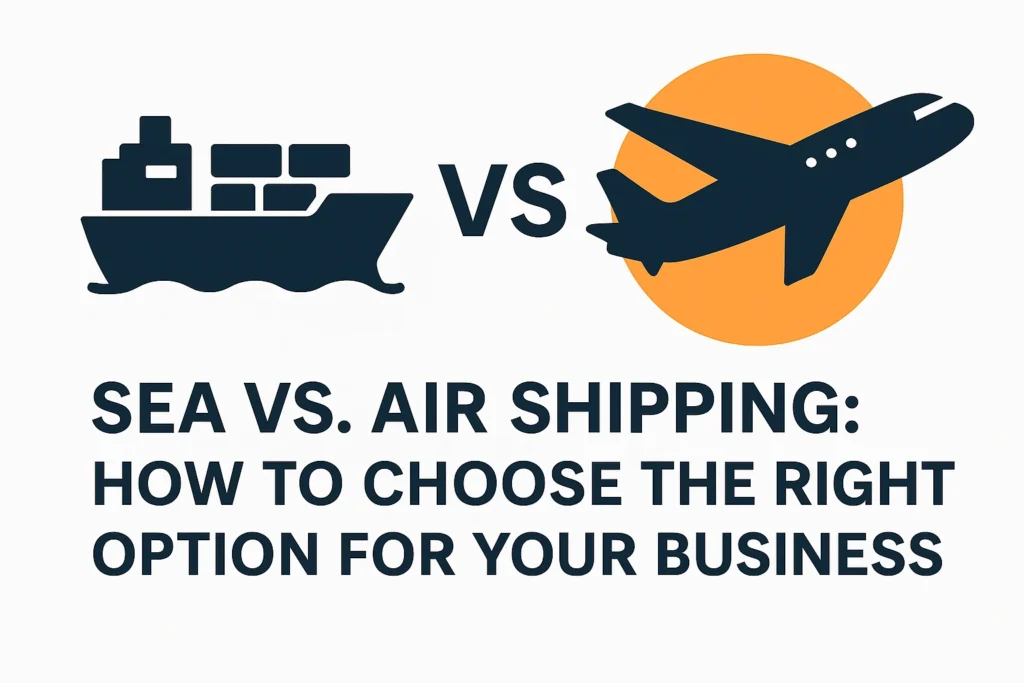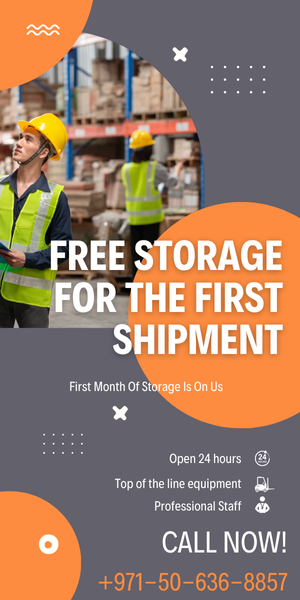One of the most critical decisions for e-commerce sellers and businesses importing goods internationally is choosing the right shipping method. Sea and air shipping each have distinct advantages, costs, and considerations. Here’s a straightforward guide to help you decide which option is best for your business.
Sea Shipping: Cost-Effective and Scalable
Sea shipping is popular for a reason—it’s cost-effective, especially for larger volumes. If your shipments aren’t time-sensitive and you’re transporting bulky or heavy goods, sea freight is typically the best choice.
Advantages of Sea Shipping:
- Cost-Effective for Large Shipments: Sea freight significantly reduces your cost per unit when shipping bulk inventory.
- Capacity and Flexibility: You can choose between Full Container Loads (FCL) or Less-than-Container Loads (LCL) based on your needs.
- Sustainable Choice: Sea shipping is generally more eco-friendly compared to air freight, with lower carbon emissions per unit.
Disadvantages of Sea Shipping:
- Slower Delivery Times: Sea shipments usually take between 20–35 days from China to the UAE.
- Potential for Delays: Factors like weather, port congestion, or customs issues can impact your timeline.
Air Shipping: Speed and Reliability
Air shipping is ideal if you have time-sensitive products, high-value goods, or smaller shipments that must reach customers quickly. The higher cost of air shipping is often offset by faster inventory turnover and quicker market responsiveness.
Advantages of Air Shipping:
- Rapid Delivery: Air freight typically delivers within 3–7 days, essential for urgent orders or seasonal goods.
- Lower Risk of Damage: Goods shipped by air undergo less handling and shorter transit times, minimizing damage risk.
- Better Inventory Control: Fast turnaround helps businesses manage inventory efficiently, reducing stockouts.
Disadvantages of Air Shipping:
- Higher Costs: Air shipping is more expensive per kilogram compared to sea freight, especially for heavy goods.
- Weight and Size Limits: Airlines have restrictions on cargo size and weight, making large or heavy shipments costly or impractical.
How to Decide Between Sea and Air Shipping
When choosing the best option, consider the following factors:
- Urgency: If your product needs to be delivered quickly, choose air shipping.
- Budget: If you’re aiming for cost efficiency and shipping in large quantities, sea freight is likely better.
- Product Type and Value: High-value, fragile, or perishable items usually benefit from air shipping, while durable, bulky goods fit sea freight well.
- Environmental Impact: If sustainability is a priority, sea shipping generally has a lower environmental footprint.
Finding the Right Balance
Often, businesses use a combination of both shipping methods. For example, you might use sea shipping for regular, planned restocks and air shipping for urgent replenishments or high-value items. This approach gives you flexibility, speed when necessary, and overall cost efficiency.
Let SamVertex Simplify Your Decision
At SamVertex, we help sellers evaluate their specific shipping needs, budgets, and timelines. Our team will guide you through choosing the right method, handling customs clearance smoothly, and delivering your goods safely to your warehouse or directly to customers.

